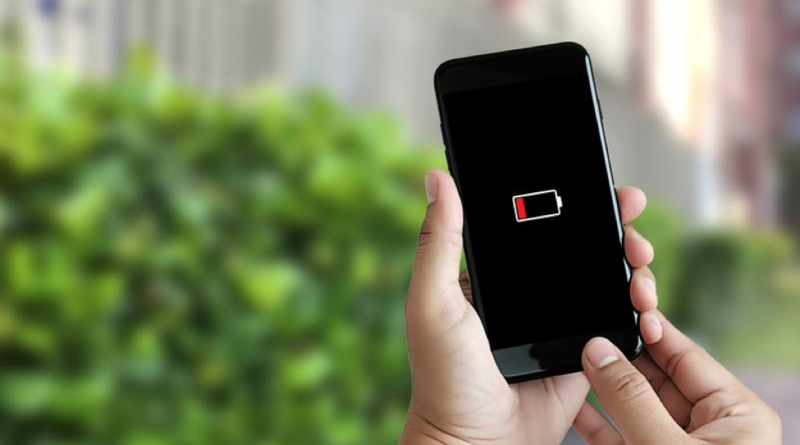Why Battery Life Is Quickly Becoming a Technological Bottleneck
Researchers have recently been dedicating a lot of time to fix the cathode problem posed by rechargeable lithium-ion batteries. A group from the Brookhaven National Laboratory from the University of Maryland along with the U.S. Army Research lab, however, may have finally solved the puzzle.
Boosting the Energy Density of Lithium-Ion Batteries
Different from anodes, cathodes usually have a limited capacity, their materials posing a bottleneck for improvement of the energy density of lithium-ion batteries. The team made an important discovery about improving that density using iron, an unlikely material.
Specifically, they employed the use of iron trifluoride which is easy to acquire, inexpensive, and safe for the environment. Iron trifluoride’s ability to transfer multiple electrons when the battery charges and discharges dramatically improved battery efficiency.
On the con side, iron trifluoride isn’t commonly used in batteries because of its low energy efficiency, slow reaction rate, and the potential for side reactions that may compromise the rechargeability of the battery that contains it.
To make the iron trifluoride useful in this application, they added in cobalt atoms and oxygen to the cathode rods used. Prior to the application, the battery worked by changing lithium ions into iron and lithium fluoride in the cathode. The converse reaction wasn’t possible, so cobalt and oxygen atoms were added to make the reverse reaction possible.
The Search Continues
Following this, there was much analysis and measurement of results to confirm they’d found a solution to the battery’s problem. Only time will tell how and if it will be picked up as a widespread solution.
Many are working on battery technology though it’s hard to anticipate which potential solutions will have an opportunity of going mainstream. It’s a hot topic these days, particularly when you consider the high hopes many have about the solution as pertains to renewable energy.
Until solid solutions are found to improve the performance of lithium-ion batteries, there are some ways you can extend the life of batteries you commonly use.
Extending the Life of Lithium-Ion Batteries
Battery life in our devices usinglithium-ion batteries for energy storage, and for good reason, including most mobile devices, depends on how we use the device on a given day and how we’ve used them in the past. Lithium ions and lithium metal moves in and out of separate electrodes causing them to contract and expand. The processes aren’t fully reversible, so the batteries lose charge capacity and voltage with each charge and discharge cycle.
There are a few ways to extend the life of your battery and minimize battery degradation.
Temperature Matters
Ideal storage temperature for lithium-ion batteries is 15°C/59°F. Storage in a dry, cool place is recommended, and make sure not to let it freeze since this can cause permanent damage. The more discharged the battery, the more prone it is to freezing. Simply Mac explains, “mobile devices using these batteries should be kept away from direct sunlight for long periods of time. You can also improve the battery life by closing background apps and allowing your phone to ‘rest’ every so often.”
Increase Charging Times
Yes, it’s a convenience to be able to quickly charge a mobile device, in minutes as opposed to hours, but the option should only be utilized when absolutely necessary. Quick-charging these batteries can rapidly degrade their storage capacity. How severe is the damage? Charging a battery in a five-minute time span versus the normal two-three hours can take down the battery’s capacity by more than 20% for that charge cycle.
Manage Battery Discharge
Standard lithium-ion batteries for mobile devices and phones are said to retain an estimated 80% of their charge capacity after 300-500 charge and discharge cycles. Most batteries, however, don’t attain such a performance level.
With conscious effort, we users can extend the battery’s capacity by limiting how often we discharge them. According to Battery University, “degradation mostly occurs during deep charge/discharge cycles so by avoiding the 0% battery level is the best course of action.” Keeping the batteries at least partially charged can help extend their life.
Battery-Saving Modes and Options
There are a few strategies that can be employed to help prolong battery life.
- Screen Brightness: Reducing the screen brightness is a quick, easy way to prolong battery life. For devices that offer organic light emitting diode (OLED) display, the “light on dark” option is also a great way to preserve battery life.
- Cellular Network Connection: The global system for mobile communications (GSM) module, a service used by cellular networks, consumes a lot of energy in a mobile device. By turning it off and/or limiting talk time, you can save battery life.
- Wi-Fi vs. 4G: Did you know Wi-Fi uses 40% less power than 4G? Using Wi-Fi over 4G where you can will help prolong battery life.
- Limit Video Viewing: Streaming video uses a lot of energy on mobile devices, not only that, but some mobile phones heat up more than usual while video viewing which can be a problem for batteries.
- Smart Battery Modes: Most recent mobile devices offer smart battery-saving modes which are software features allowing CPU modification for different apps, screen brightness, notifications and more to save energy.
- Airplane Mode: Airplane mode typically disables Bluetooth, GPS, GSM, and Wi-Fi functions to save energy.
The use of these strategies can help extend your battery life up to 40% on a given day and help maintain a consistent battery capacity over its lifetime.
For more great articles like this, make sure to spend some time in our Technology section! We are updating all the time with great information, and we know you’ll find something you’ll find interesting.

Pingback: You Should Expect Exciting Changes in Batteries in the Next 10 Years - Falstaff Enterprises